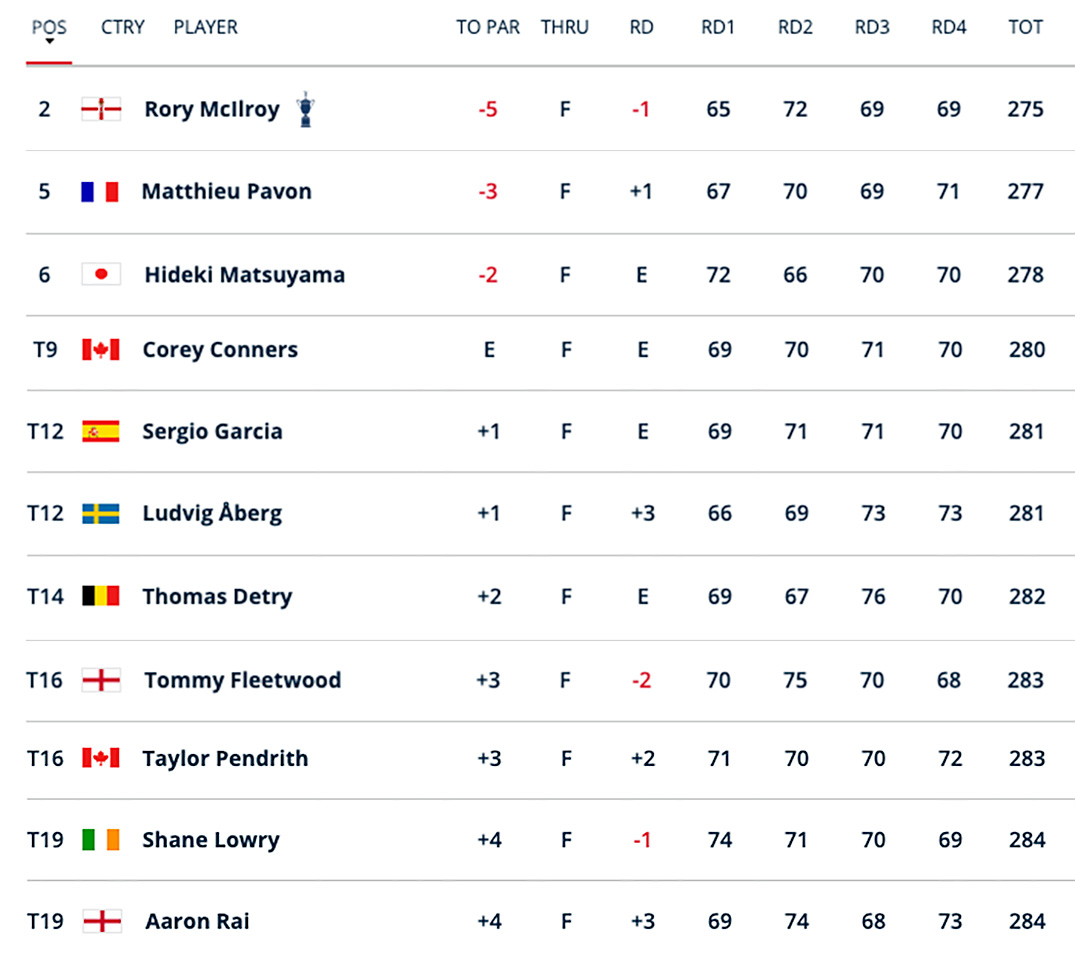U.S. Open Has Become a True International Stage For Golf’s Best

PINEHURST, N.C. — Golf is a sport unlike any other.
It’s a sport with a great deal of history, one that continues to grow around the world. The U.S. Open is a perfect example of this internationalization, as players from across the globe — both amateurs and professionals — bring their unique style of play, culture, knowledge and traditions to compete in one place.
The Open is truly a testament to golf’s global appeal. This year, players representing 26 different countries, including the U.S., competed at one of the sport’s most challenging stages: Pinehurst No. 2. Of the 156 golfers in the field, 70 were international players.
And the impact showed on the leaderboard as well.
According to the Elias Sports Bureau, this was the fifth U.S. Open since 2000 with players from at least 10 nations within five strokes of the leader or leaders after 36 holes.
For the tournament, 11 players were even with par or better, with four being international. Rory McIlroy, the 2011 U.S. Open champion from Northern Ireland, finished 5-under 275, Mathieu Pavon (France) at 3-under 277, Hideki Matsuyama (Japan) for 2-under 278, and Corey Conners (Canada) even with par at 280. Two others, Sergio Garcia (Spain) and Ludvig Åberg (Sweden), finished just outside the top 10 at 1-over par.

The U.S. Open is known for its difficulty, as the courses are designed to challenge even the best players’ games. Ludvig Åberg, a 24-year-old born in Eslöv, Sweden, captured the essence of the U.S. Open.
“I think a U.S. Open is supposed to be hard,” said Åberg, who led the tournament after the second round. “It’s supposed to be tricky, and it’s supposed to challenge any aspect of your game. And I feel like it’s really doing that.”
Golf’s popularity knows no geographical boundaries; every country has its own distinctive styles, dedicated supporters and course layouts.
Scotland, the birthplace of golf, holds lots of traditions and history in its venues, such as the iconic St. Andrews, one of the world’s oldest golf courses. Places like Japan, meanwhile, are known for having lush courses, and at many golf courses in Japan, there are additional elements that add to the overall experience, such as massages or sake tasting.
In the United States, there are various course terrains and climates to choose from, from the desert courses of Arizona to the coastal link-style courses like Pebble Beach.
There are also significant differences in the structure of the courses between different countries.
The U.S. Open has narrow fairways, typically thick rough and runny greens, attributes that Frenchman Matthieu Pavon, 31, does not see regularly in Europe. However, the Pinehurst No. 2 course design reminds him of Europe in some ways.

“Yeah, it feels almost home,” said Pavon, who grew up in Bordeaux, France. “It really looks the same. It looks linksy.”
Pavon said he had to adjust his game mentally and physically because, while Pinehurst was similar in some ways, the courses he plays in Europe are easier in comparison.
Every country has its own unique and distinct golf culture. Golf is extremely popular in the United States, and there are thousands of golf courses, strong youth programs across the country and extensive media coverage, due to such a massive fan base.
However, it’s not the same everywhere. Adrian Meronk, a professional golfer from Poland, explained that golf in Poland is so small that everyone in the golf world knows each other.
“We only have 25 or so golf courses [in Poland],” Meronk said. “This is the first time [since] 2009 that we [are hosting] a Challenge Tour event, which is like the Korn Ferry here in the U.S. So, it’s not very popular.”
Meronk acknowledged that while golf is undoubtedly growing in his homeland — and will continue to grow after the long-awaited turn of the Challenge Tour event in September — golf in the U.S. is “much, much bigger.”
Åberg came to the States to play golf collegiately at Texas Tech and says he is very grateful to get the opportunity to play here in America and experience the golf culture here.
“I grew up in Sweden where golf is, I guess, not as big as over here,” Åberg said. “But there are still very passionate golfers. I obviously love playing golf at home, as well. It’s very cool.”

Players from all over the world dream of playing in such a prestigious tournament as the U.S. Open.
For American players, it’s a victory at home and a testimony of their abilities to play in one of the hardest venues. For international players, it’s proof that they can compete and succeed on the global stage.
Pavon says that playing in America has been a dream come true.
“Since I was a kid, I have been dreaming about America,” said Pavon, who was playing in his fourth career U.S. Open and finished fifth. “I came with very little and low expectations. I think probably this is what made the difference so far.
“We are all chasing the same dream: winning majors, winning Ryder Cups. It would be huge. [Winning the U.S. Open is] the dream every French player has been chasing so far. Having someone capable to lift the trophy like that would be pretty big for me and my country.”
Meronk recognizes the critical role that international unification has on the sport itself.
“We play everywhere [around the world], and that’s super, super nice,” Meronk said. “Golf is one of the most popular sports in the world, especially in the U.S. It’s nice to be a professional golfer and try to promote this game around the world.”
Category: Covering the U.S. Open, Student Author
Tagged: 2024 U.S. Open Covering the U.S. Open
Subscribe to our News Digest


